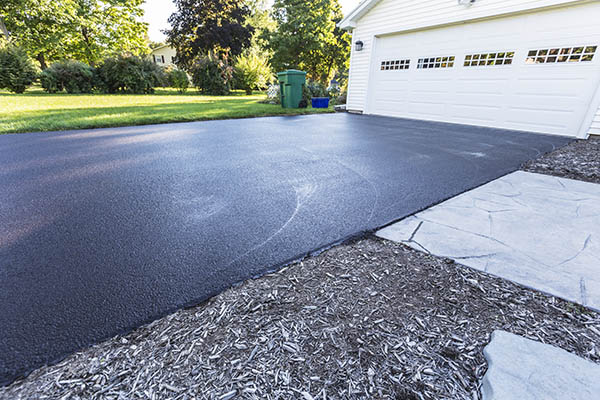Efficient Asphalt Repair: Cold Mix Sealing Techniques Introduced
Efficient Asphalt Repair: Cold Mix Sealing Techniques Introduced
Blog Article
Cold Mix Asphalt Vs. Hot Mix Asphalt: Which Is Right for You?

Structure Distinctions
Cold mix asphalt is generated by emulsifying the asphalt binder with water and an emulsifying representative prior to blending it with accumulation. The warm mix asphalt manufacturing procedure includes heating up the accumulation and asphalt binder individually prior to integrating them at the asphalt plant.
Moreover, cool mix asphalt often tends to be much less thick and a lot more versatile than hot mix asphalt. This versatility makes it much better fit for areas with greater levels of motion, such as driveways or roadways with heavy traffic. In comparison, warm mix asphalt is understood for its high longevity and resistance to rutting and fracturing, making it a recommended selection for freeways and high-traffic roads where longevity is essential.
Installation Refine Differences
The procedure of installing chilly mix and warm mix asphalt exhibits significant differences in their procedures and needs. In comparison, hot mix asphalt necessitates a much more sophisticated installment procedure. Due to the heating demands, warm mix asphalt installments are usually lugged out by professionals with specific devices, making certain a more long-term and structurally audio outcome.
Sturdiness and Durability Variables
When taking into consideration asphalt options, sturdiness and durability are critical factors to examine for long-term sidewalk efficiency,. Warm mix asphalt (HMA) is recognized for its extraordinary longevity and long life. The high temperature levels during the laying and blending procedure permit far better compaction, causing a denser and more powerful sidewalk framework. This causes HMA being a lot more resistant to rush hour tons, harsh climate condition, and the impacts of aging compared to cool mix asphalt (CMA)
In regards to durability, HMA commonly outshines CMA because of its superior toughness and resistance properties. HMA sidewalks have a longer service life, calling for less constant repair work and maintenance, which can equate to cost financial savings in the long run. In addition, HMA pavements are extra quickly customizable to fulfill particular task requirements, better improving their durability.
Expense Factors To Consider
Thinking about the monetary ramifications is a critical facet when reviewing the choice in between warm mix asphalt (HMA) and cool mix asphalt (CMA) for sidewalk tasks. While the first expense of hot mix asphalt is normally higher than that of chilly mix asphalt, HMA typically offers a much more affordable service in the long run due to its superior durability and longevity.
In enhancement to product expenses, it's vital to think about the expenses linked with installment and maintenance when comparing HMA and CMA. HMA generally calls for specific equipment and experienced labor for correct installment, which can affect overall task expenses. On the other hand, CMA is simpler to deal with and can usually be used using less complex methods, potentially decreasing setup expenses. Eventually, the decision in between HMA and CMA must take into account not simply the first cost find here however also the lasting monetary implications to figure out the most cost-efficient choice for the specific pavement task.
Environmental Effect Contrast
Contrast of the ecological influences in between warm mix asphalt (HMA) and cool mix asphalt (CMA) discloses distinctive distinctions in sustainability techniques. HMA manufacturing calls for high temperature levels, leading check these guys out to raised power intake and greenhouse gas exhausts.
Moreover, the usage of CMA commonly includes recycling existing asphalt sidewalk, promoting source conservation and reducing the quantity of waste sent to land fills. By choosing for CMA over HMA, roadway building projects can add positively to ecological conservation efforts.
Conclusion
To conclude, the selection between chilly mix asphalt (CMA) and warm mix asphalt (HMA) depends on numerous factors such as structure, installment process, longevity, longevity, expense, and ecological impact. asphalt patch repair. While CMA supplies a quick and economical service for small repair services, HMA ensures remarkable longevity and longevity for rush hour locations. Take into consideration these factors thoroughly to figure out which kind of asphalt is the appropriate choice for your paving needs

Thinking about the economic ramifications is a crucial element when reviewing the choice in between warm mix asphalt (HMA) and cold mix asphalt (CMA) for pavement tasks. While the initial expense of warm mix asphalt is generally higher than that of cool mix asphalt, HMA frequently gives a more economical remedy in the long run due to its remarkable durability and durability. asphalt repair.Comparison of the environmental effects between warm mix asphalt (HMA) and cool mix asphalt (CMA) discloses distinct differences in sustainability methods.In final thought, the selection in between cool mix asphalt (CMA) and hot mix asphalt (HMA) depends on different check my site aspects such as structure, installment process, durability, durability, expense, and ecological influence
Report this page